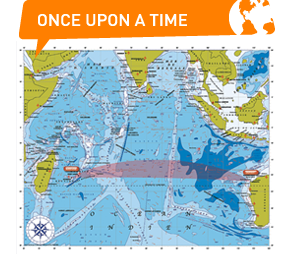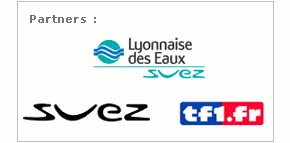





 Crossing the Indian Ocean in 2006
Crossing the Indian Ocean in 2006
AN EXTREME ADVENTURE
This new adventure upon which the windsurfer is embarking is a first, worldwide: a solo crossing of the Indian Ocean without assistance on a sailboard between Exmouth on the north west coast of Australia and Reunion Island, due to take place in 2006.
The departure is scheduled from April 5 2006, so as to benefit from the most favorable window concerning weather conditions. Raphaëla will travel some 3400 nautical miles (6300 km). She is due to arrive in June after 70-75 days spent alone at sea.
EXMOUTH
Founded in 1967, to meet the needs of the neighboring naval communications base, Exmouth’s economy is based on tourism and so offers a vast choice of places to stay and things to do and see. The small town of 2500 inhabitants attracts underwater diving enthusiasts because of its magnificent reef and colorful underwater fauna.
REUNION ISLAND
Situated in the heart of the Indian Ocean, Reunion Island is a volcanic island whose highest peak, over 3000m, can be seen clearly by sea farers. With a surface area of 2500 square km the island has a diversity of richly varied landscapes and cultures, making it a most original place to visit. To arrive at Reunion Island after a long solo crossing represents a marvelous opportunity to discover the island and its history.
A FIRST
The windsurfer will be facing several major difficulties:
The crossing will include at least 3 or 4 days of extreme maritime and wind conditions, possibly causing the board to capsize or forcing the windsurfer to stay shut inside the cabin as if in a survival cell while the sailboard is on the run. Furthermore, the Indian Ocean’s unique and complex meteorological and oceanographic system will make precision planning of the route essential. Sailing conditions will certainly be, on average, much more problematic than those previously encountered, which means that the windsurfer will have to be constantly on the lookout and prepared to draw on a huge amount of physical energy.
The zone she will cover is famous for its large fish population which probably means that she will come across many more types of fauna, along with the risks this entails. In particular, there are many sharks along the coasts of Australia and the Mascarene Islands. With this in mind, and to prepare for any such meetings in the water which might happen during a careening session, as was necessary when she crossed the Pacific, Raphaëla dived and swam among 9 sharks at the Nausicaa pool at Boulogne sur Mer on June 22nd 2005.
Beyond the technical aspects, Raphaëla adds:
“In order to succeed you first have to be attentive to the environment, to the ocean, you need to observe it, tiptoe around it in order to be in harmony with it. I also need to feel that there is a certain serenity coming from my team and all the participants in order to advance and to feel good, alone. And finally, we also need the backing and financial viability provided by our partners to prepare this voyage down to the last detail and take what seem to us to be the best decisions at each step. One might say that we need “sustainable development” for such a venture to succeed, even, in fact, we could say that it is required in every human venture, not just in our case but everywhere. Could this be a challenge to take up?”
 2003: the Pacific Ocean
2003: the Pacific Ocean
It was a world first without any equivalent: windsurfing across the Pacific in the wake of the famous Kon-Tiki raft, from Peru to Polynesia. Raphaëla le Gouvello left on the 5 August 2003 and traveled 4 455 nautical miles, from Lima in Peru to Papeete, to arrive on 2nd November 2003, celebrated exceptionally by the Polynesians.
This Pacific crossing was a completely autonomous voyage of 89 days’ uninterrupted navigation, prepared painstakingly by Raphaëla and her team for over 2 and half years in advance. This was the opportunity for Raphaëla to deepen and intensify the very strong relationship she has with the sea.
 2002: the Mediterranean Sea
2002: the Mediterranean Sea
Raphaëla had a new sailboard built in 2001 and, in order to prepare herself for the Pacific, after undergoing intensive training for over a year and a half, she decided with her team to set out to cross the Mediterranean, a voyage that hitherto had not been carried out single-handed on a sailboard.
After a first unsuccessful departure on 25th July 2002, Raphaëla started out from the Municipal Sailing Centre of Roucas-Blanc in MARSEILLE on 28th August to reach SIDI BOU SAID in Tunisia on 7th September 2002.
She traveled 550 nautical miles altogether, that is, over 1 000 km, in 10 days. This crossing was to show that the new sailboard was faster and every bit reliable.
 2000: the Atlantic Ocean
2000: the Atlantic Ocean
First Atlantic Ocean crossing on a surfboard single-handed by a woman.
Raphaëla left from Saly (Senegal) on 25th February 2000. Her gamble paid off and she reached Martinique after a 2750-nautical-mile crossing lasting 58 days.
The voyage was longer than planned due to the extreme, and unusual, lack of wind just after the departure, which was to require fresh supplies in the final third of the voyage so that Raphaëla could successfully complete her Atlantic challenge!